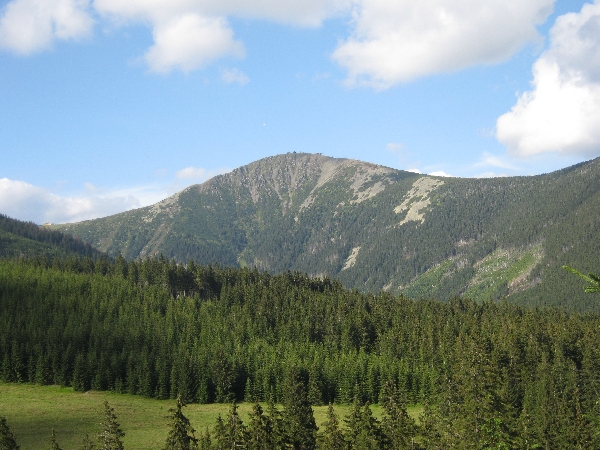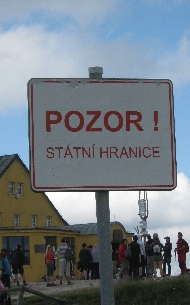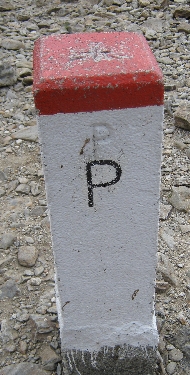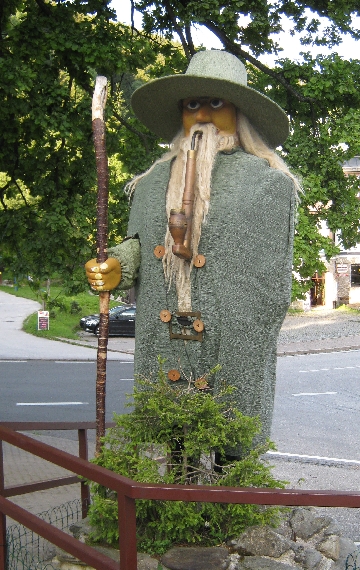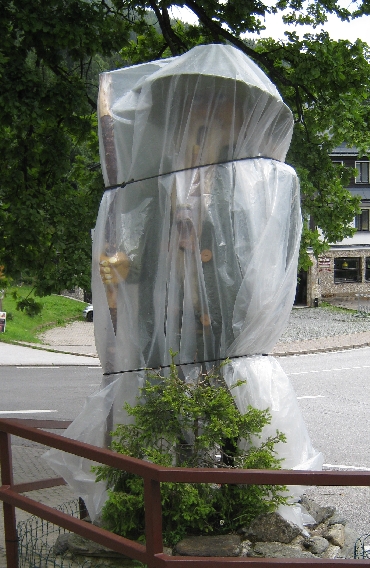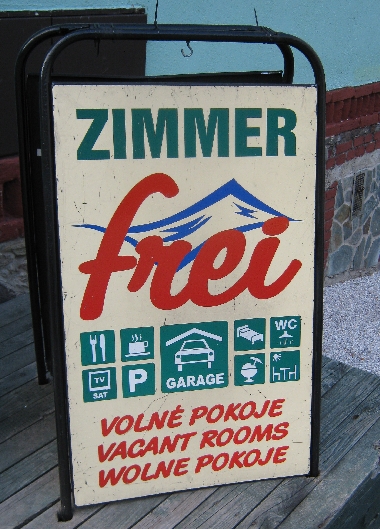
We were meant to spend our week in the Krkonoše Mountains, in the company of our friends Jirka and Sher Vacik. Unfortunately, because of their needing to care for a nuclear reactor and a sick gerbil, (I’ll let them explain, not me!), they were only able to join us for a couple of days at the weekend. But Jirka was determined that, whilst staying in Pec, we should seek to climb Snežka, at 1602 metres, the highest mountain in the Czech Republic.
The morning of Saturday 16th July dawned fine and sunny, so after breakfast in Penzion Nikola, Jirka, Sher, Sam the dog and I set off. Sybille had damaged a muscle fibre in one of her calves a couple of weeks previously so whilst she had managed quite bit of walking with me during the week, she felt that climbing Snežka, (or the Schneekoppe as she calls it in German), would be too much for her and so she remained in Pec for the day.
The first four kilometres of our walk took us northwards out of Pec along a beautiful glaciated valley called Obrí dul. The Úpa River flows along the valley floor over a series of attractive waterfalls. At the end of the valley is a small chapel where there are photographs displayed, illustrating the damage done by both flooding and by landslides in the late nineteenth century. Sybille and I had previously walked this far and then back again, one afternoon earlier in the week.

Beyond the Chapel, the path then starts climbing steeply up the eastern side of the valley with this wonderful view westwards to Studnicní hora.
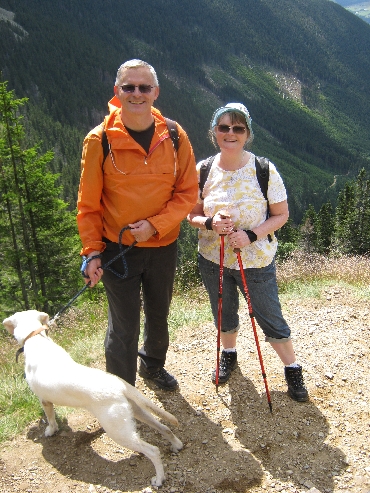
And here are Jirka, Sher and Sam taking a brief breather during our climb upwards.
The path eventually reaches a col immediately to the west of Snežka. The col lies on the ridge which also forms the border between the Czech Republic and Poland. Therefore, just before reaching the col, there is a rather pointless sign warning you of the approaching national frontier. It is pointless because both countries are now members of the European Union and parties to the Schengen agreement meaning there are no passport checks or border controls. Instead, the border is delineated by a line of concrete posts with ‘C’ on one side for the Czech Republic and ‘P’ on the other for Poland. If you look closely at the Czech side of each post, you can see that originally, the letters ‘CS’ were engraved for Czechoslovakia, the country that ceased to exist on 1st January 1993.
At the col, various paths converge and it being a sunny Saturday in July, there were quite a large number of walkers around including many Poles who had climbed up on the other side. In fact both paths that lead from the col to the summit of Snežka, actually are in Poland rather than the Czech Republic.
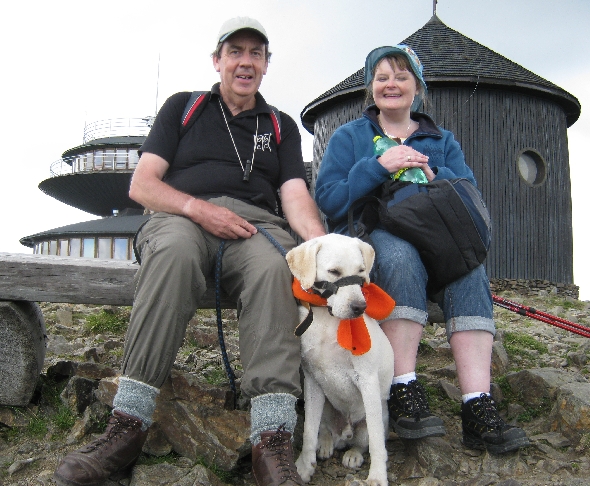
But eventually we did make it up the last few hundred metres of climbing to the summit of Snežka and here is the photograph, taken by Jirka, to show that we got there. The Chapel behind Sher is in the Czech Republic, whilst the interestingly shaped observatory behind me is in Poland.
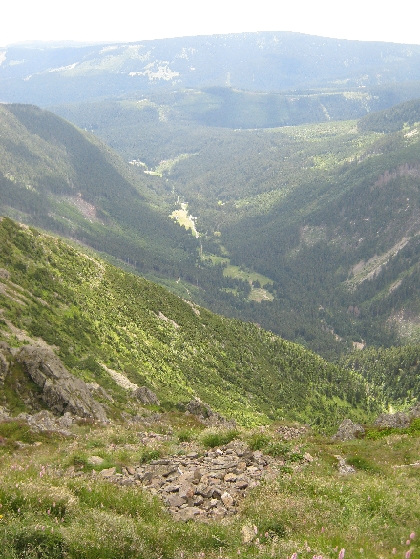
And this is the view from the top looking back down into Obrí dul towards Pec, showing from where we had set off just under five hours previously.
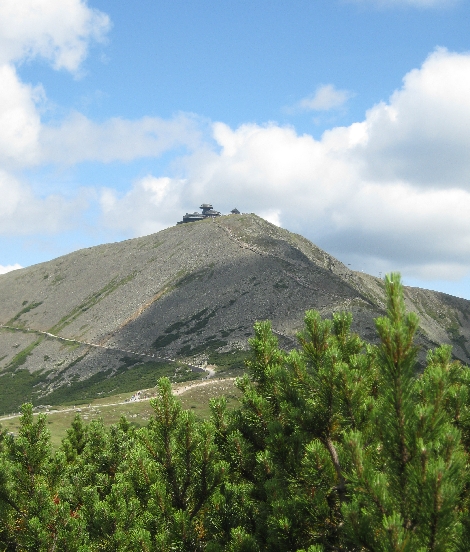
After some well earned refreshment and a brief rest, we returned to the col but then set out on a different semi-circular route to return to Pec. This is a view looking back to the summit of Snežka.

And our path then took us across an ecologically important tundra marsh via a couple of long wooden bridges. Finally, we were rewarded with this splendid view of Snežka in the early evening sunshine, during the final section of our decent back into Pec.
